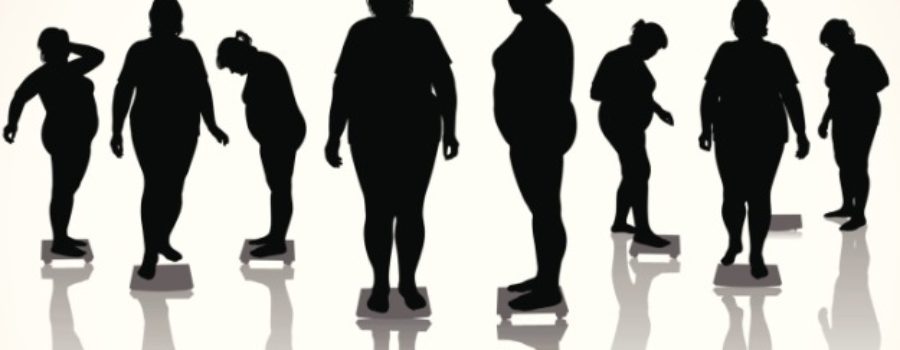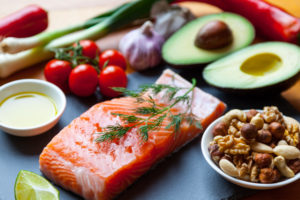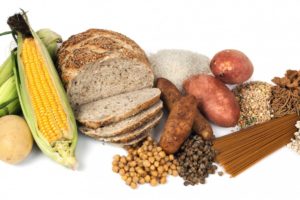This article (and the ones that at follow) will change your entire thinking about obesity, diet and what really has caused today’s epidemic of dangerous metabolic diseases. Get ready for some shocking facts and the debunking of some common obesity myths, all based on the latest scientific research. I’m going to explain what causes chronic fat gain, obesity and the health related issues, that we, our friends, family, and even our children and grandchildren now face today. Then I’ll give you the tools that you need to be able to feel better, become healthier and change your life.
You will learn:
- Why obesity isn’t the real problem.
- Why a calorie isn’t actually a calorie.
- What causes people to become carb sensitive and how to reverse it.
- How to interpret ingredients lists and hidden foods.
- If you’re hormones are working for you or against you.
- Why you have a bigger appetite than those thin people.
- How thin people can get fat on the inside.
- Why children are obese before they’re even born.
Why the world is desperately sick
Adults and children these days are now becoming sick, because of what we eat and drink, and it’s happening at younger and younger ages. The general population is gaining weight and becoming chronically ill. We all know obesity is an epidemic in adults. The processed food industry promote the idea that this obesity is caused by eating too much, and exercising too little. They say the problem is in the quantity of the food that you eat, and not in the quality of food that they sell. They call this common sense, and we’ve all swallowed it hook, line and sinker. But I don’t believe in common sense. I believe in science, and the science tells us something entirely different.
Years ago, type 2 diabetes was an adult disease only. In 1980, virtually no children had type 2 diabetes (the preventable form of diabetes). It used to be so rare that such children were reported in medical journals. Back then it was zero, and today its sixty thousand. Now most people think obesity is caused by increased intake, and decreased output; gluttony and sloth behaviours. They say if you’re obese, it’s your fault. But if obesity is about eating too much and exercising too little, then how come we are starting to see obese six month olds? They don’t diet and exercise and they don’t choose what they eat. I have a hard time believing we and our children are to blame. We don’t choose to be overweight. Something else has to be going on here.
Obesity is an epidemic in adults, children, toddlers, and even now in new borns. We think a fat healthy baby is a good thing. But you can’t tell just by looking at that baby if they are just fat or if there’s something much more ominous. In the last 25 years, birth weight has increased by half a pound all around the world, and when you measure the body composition, that extra weight is extra fat. Where’d that obesity come from? It turns out, it’s what crossed the placenta from what the mother ate during the pregnancy, and that grew those fat cells before birth, and those cells keep growing and they never go away.
Obesity isn’t the real problem
But what if I told you the real problem isn’t even about obesity? Obesity is a symptom or a sign of the real problem. Obesity itself is not a disease, and it doesn’t always equal diabetes. For example, obesity is increasing worldwide at the rate of 1% per year, but type 2 diabetes is increasing at the rate of 4% per year. If diabetes were just a subset of the larger obesity, then how can you explain that? Well you can’t, because it ain’t true. Thin people get diabetes too. Look at China and India, where diabetes is through the roof at 11% prevalence without being obese. Obesity and diabetes are not the same.
Not every obese person is metabolically ill. About 80% of them are. But that means 20% are metabolically healthy. Conversely you might think that all thin people are healthy, not so. Up to 40% of the normal weight population get the same metabolic diseases (type 2 diabetes, high blood pressure, heart disease, fatty liver disease) as do the obese. In other words, the obese sick people and the thin sick people overlap when it comes to illness. It turns out there are more thin sick people, than obese sick people.
Still don’t believe me? Have a look at the next example below. Here we have three bodies from adult body scans. On the left, is a body scan of an obese person. You can see their love handles (grey fat on the sides of the body), and then there’s their liver (large dark circle on the left), which is actually looking pretty healthy in this obese person. Then in the middle, you see an obese patient who is much more like the common scenario and you can see their liver now has a more grey, grainy appearance, which is actually internal fat of the liver. Now on the right, you see a thin person (less grey fat round the skin). Not so much obesity on the outside, but the obesity instead is on the inside of the organs, where you can see that same grey glass appearance of the fat in the liver. This is the same sign of fatty liver damage as the obese person (in the middle) who’s ill too.
Thin sick, not just fat sick. Liver fat is a major risk factor for diabetes, even if you don’t have a lot of body fat. Even if you can’t see the fat, it’s still there. The key is that many thin looking people are actually fat inside. This is so common, that doctors even have a name for it. It’s called “TOFI”. Thin on the outside, fat on the inside (real medical term I swear). So someone who looks quite thin, might have a very bad diet, and might have visceral abdominal fat around the internal organs, putting them at just as much risk of disease as someone who’s obese and also has the same internal fat. So what is this telling us? If obese people and thin people can both get sick then what’s the real problem? Well it’s called metabolic syndrome.
Metabolic syndrome is the sum of how your metabolism works, the chemical processes that occur in your body and how they work together. They can either make you well, or they can make you sick. Metabolic diseases include:
- Diabetes
- High blood pressure
- Heart disease
- Diabetes
- Blood fat diseases
- Non-alcoholic fatty liver disease
- Kidney Disease
- Polycystic ovarian disease (in females)
- Cancer
- Alzheimer’s disease
These metabolic diseases account for 75% of all disease in America. Just read that again, 75%! All from the way different foods are metabolised by the body. 75% of those are fully preventable. These diseases are because we literally turn food to fat, and it accumulates around your organs. We’re told that calories from carrots are the same as calories from carrot cake. Not so.
A calorie is NOT a calorie
You might eat a food, and say all of the calories are stored as fat. But if you eat other foods, those calories will not be stored and something else will happen to them. Because a calorie is not a calorie. They’re not all equal, and where they come from, determines where they go and where they end up. Right now, it’s about our food quality, and that’s the issue. It’s about processed food, and the foods that are being consumed world wide (including countries like India and China). That’s why they have this problem too. Processed food is anything that comes in a bottle, or jar, or a can, a box or a wrapper. It includes fast food, junk food and all these types of products have ingredients that have either been added or removed, and that’s what makes them unhealthy. Over the years we have been putting on weight, trying every kind of dieting, reading all the latest fads on starvation diets and excessive exercise, being told we are lazy and stressed out. But we are none of those things. It was all of the sugar, and a lack of fibre, and we do not know how to eat properly. We are adults, and we have no idea how to feed ourselves.
“ALL food is inherently good. It’s what we do to the food that’s not.”
We need to avoid processed foods, and I’m gonna show you how to do that using my website and social media. Change your foods to the kinds that I recommend, lose the excess weight, restore your vitality, your health and your happiness. It’s not your fault if you gain the weight. You are simply malnourished. 30% of the people in the world today are obese rather than undernourished. Obesity is a form of malnutrition and today it comes from eating processed food. Many thin and obese people are malnourished and sick from metabolic syndrome because their diets are primarily processed foods. Our bodies were not designed for this, they were designed to eat real food. When I explain it to you and when you understand it, you’ll be able to tell which calories are ok, which are not, and which ones will allow you to eat well and stay healthy.
Let’s look at some examples at how the body breaks down, and metabolises food. Food is made up of these types of macronutrients. Fibre, protein, fat and carbohydrates. Lets look at each one.
Fibre
First let’s look at how fibre is used by the body. Nuts for example have a lot of fibre and you might eat 160 calories in almonds. But because of the fibre in the almonds, some good things happen. First the fibre prevents the absorption of some of those calories in the upper intestine, which keeps your blood sugar from rising too high, which keeps your insulin down (insulin is the energy storage hormone). It also keeps your liver safe and prevents weight gain. Second, the fibre delivers more calories down the intestine so that the bacteria in the intestine end up chewing it up instead of you absorbing them. So if you can believe it, even if 160 calories passed your lips, only 80% of those are actually available for you to absorb. Because a calorie is not a calorie.
Protein

Now let’s look at how protein is used by the body. All foods have to be metabolised into chemical energy. When it comes to protein like meat, fish and eggs, you have to “prime the pump” to make that process work. You require energy to digest the food and get the chemical energy out. This is called the thermic effect of food and protein requires over twice the energy to digest, compared to fat and carbs. Because a calorie is not a calorie.
Fat
Next let’s look at fat. Fat’s are 9 calories per gram. But there are good fats and there are bad fats. Some fats are heart healthy and will save your life, and others will kill you. Good fats are like omega 3s of wild salmon, flaxseed and walnuts. Bad fats include trans fats which are found in packaged cakes, and virtually every backed good (until very recently). Calories from fat are not all equal either.
Carbohydrates
Finally let’s look at carbohydrates. Again there are good carbs, and there are bad carbs. One ok carb is the kind you find in milk called lactose (milk sugar). Your liver turns that to glucose very easily. Other ok carbs are from vegetables and whole grains. They are all good for one reason, because they come with inherent fibre. Processed food is loaded with refined carbohydrates where the fibre has been removed (not so good). Refined carbohydrates include all the kinds of starch and found in breads, rice, pasta and potatoes, without the fibre. White food is food with fibre removed. You absorb refined carbs very rapidly, that spikes your insulin, driving fat accumulation. It’s all about that insulin rise. (For more, here’s a video to watch after this article)
When we’re talking about the worst carb of all, we’re talking about sugar (the sweet stuff you know, the crystals). Sugar has been added to virtually every single processed food. Sugar calories are worse for your health than virtually every other type of calorie. A recent study found that eating an extra 150 calories of real food per day does not increase diabetes prevalence worldwide, but if those calories happened to come from a can of soda instead, global diabetes went up eleven fold. That’s eleven times as much risk, but for the same number of calories. Eating more calories only increases your risk of diabetes minimally, but if your extra calories come from sugar then your risk of diabetes is now maximum. Because a calorie is not a calorie. While calories from other sources can contribute to weight gain, calories from sugar uniquely contribute to the type 2 diabetes epidemic. People say “sugar calories are just like empty calories”, but sugar calories are not empty. They are way worse. Sugar in your food means fat in your liver, and then type 2 diabetes as soon as your metabolic system becomes overwhelmed. This is why we know obesity is not our fault. So who’s fault is it? It’s our processed food environment.
We can also make better choices when we eat outside the home. For the food at school, the convenience store and the fast food restaurant we usually don’t end up having a say.
Example:
Recent improvements in pre-school obesity rates confirm the problem is environmental. Pre-school kids eat what we give them. Now schools are recently starting to get rid of some of the juice, soda and junk food out of day care. That’s great! But if you look at obesity rates in all the other age groups, it just continues to rise.
Today, we can’t control what our food industry does or our environment, but we can understand it, the tactics the industry uses and how to combat it.















Leave a Reply